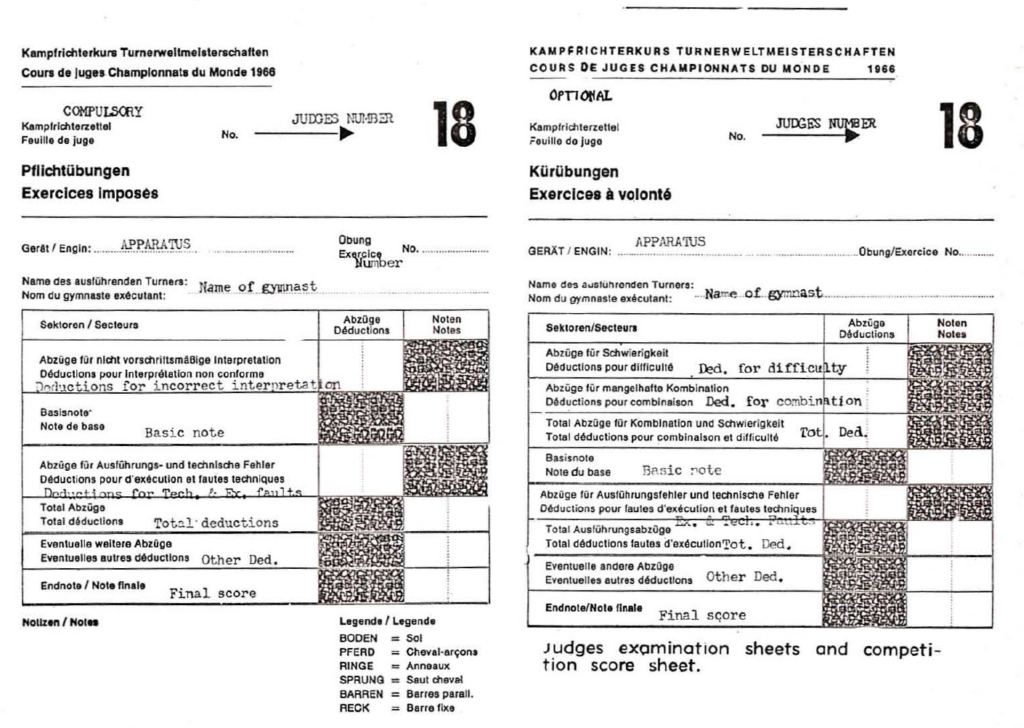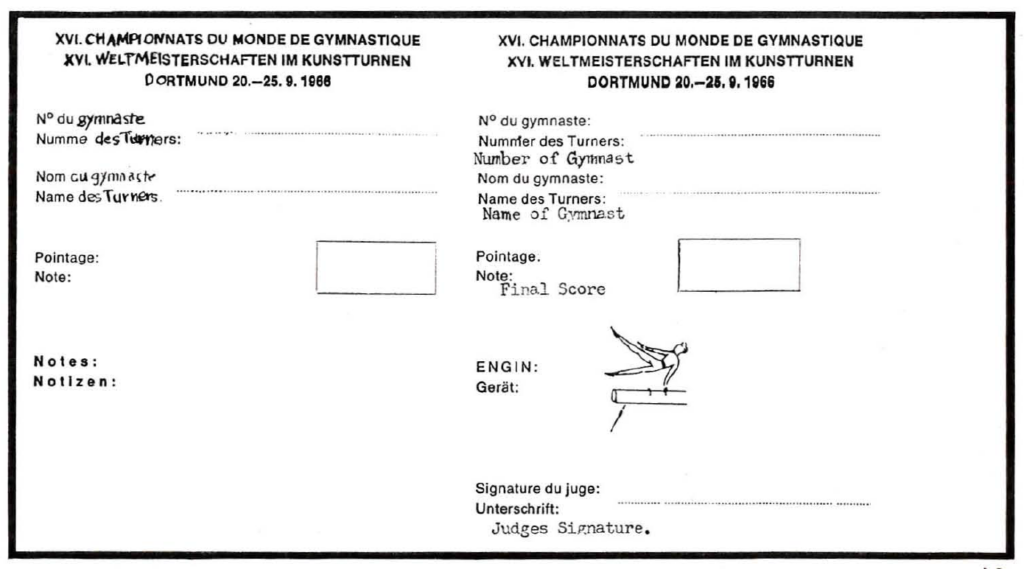1966 was a big year. Charles Thoeni, the president of the FIG, resigned for health reasons. At the 45th Congress, Arthur Gander, president of the Men’s Technical Committee, was elected president of the FIG.
Also, it was the year that “risk, originality, and virtuosity” would become the guiding principle in gymnastics for years to come. Arthur Gander made that perfectly clear during the technical committee meeting and judges course.
Here are some notes from that meeting. They are based on Thomas Maloney’s article in Modern Gymnast, November 1966.
The Rise of Risk, Originality, and Virtuosity
In the words of Arthur Gander…
“We must give credit to the gymnast who shows exceptional difficulty, risk, originality and vitality in his exercise. On the other hand, we must be severe in making our deductions for a gymnast who is performing a stock routine.”
🚨 He added:
“Finally, gentlemen, a gymnast who shows a routine with none of the elements of risk, originality, and difficulty should never win a world championship.“
By 1968, when the new Code of Points rolled out, Gander had the wording nailed down. None of this “risk, originality, and vitality” stuff. The wording would be: “risk, originality, and virtuosity.”
My thought bubble: The timing of this announcement was rather poor. If a gymnast came to Worlds with the intention of performing simple, clean routines, he was out of luck. No gold medals for him.
Prioritizing Difficulty and Risk over Execution
The gist: Risk will be rewarded in the form of fewer execution deductions.
It was pointed out repeatedly that judges should be lenient in “penalty points” or deductions, in those cases where a gymnast who had executed a difficult original movement or two difficult “C” moves in succession and then broke. Under the present Code of Points the gymnast could be penalized anywhere from .3 to .7, but in this case the penalty would only be .1 to .2 because of his difficult movements.
Furthermore, it was pointed out that where a gymnast in performing a difficult exercise, judges no longer should automatically deduct .1 each time there is a slight knee bend or slight opening of legs or other minor execution faults. It was recommended that it might take an accumulation of three or four faults of this type to equal a .1 deduction.
On the other hand it was recognized that a gymnast who is performing a routine that presents very little risk with minimum difficulty, should received the full penalty for a break or execution fault.
Reminder: Not everyone in the gymnastics community liked this idea. See the following posts:
The Power of Superior Judges
In addition to the four judges scoring a routine, there was a superior judge overseeing the apparatus. That judge held a lot of power.
It was also decided to give the Superior Judge more authority in that his score would be the determining factor in any discussions or protests. In the event that the Judges scores are divided the Superior judge will decide which judge must change his score. For example;
Scores of 9.1, 9.2, 9.6, 9.7 are given a gymnast with the superior judge scoring the exercise 9.3. As superior judge’s score agrees with the low score judges, the 9.6 judge must lower his score to come in to the permitted spread” i.e., 9.5. Average score would then be 9.35 for the exercise. In this meet as in all international competitions the superior judge is required to turn in his score along with the other judges. It is also important to point out that in the event of a protest on a score, again the superior judges score would be the deciding factor. For example;
Scores of 9.8, 9.8, 9.6, 9.6, are given a gymnast with the superior judge scoring the exercise 9.6. A formal protest is made against the 9.6 scores being too low. The fact that the superior judge agrees with the low score means the protest cannot be allowed.
“Closed” Scoring
In other words, only composite scores would be flashed at the 1966 World Championships.
In the actual competition it was decided by the Technical Committee to use “Closed Judging” for the Men’s competition with only the composite score being flashed.
My thought bubble:
- On the one hand, this simplifies the experience for spectators. When every judge flashes his score, spectators might see only one score and think, “Oh, the gymnast received a 9.9.” Meanwhile, his composite score was a 9.80.
- On the other hand, this decreases transparency. Gymnasts, coaches, and spectators can’t see if one judge is favoring a certain team over another, for example.
Don’t Talk to Gymnasts
It was also announced to all of the team coaches that the superior judge would make a deduction of from .1 to .3 from the score of any gymnast if the coach spoke to the gymnast at any time while he was performing his routine.
Don’t Start Routines Early
Another new ruling was that if a gymnast started his routine before he received the nod from the superior judge, the superior judge would penalize him .1 to .3.
My thought bubble: Why the point range? Why would one gymnast receive 0.1 for starting early and another 0.3?
Other Minor Changes
- They used a soft gong on floor at sixty seconds and a loud gong at seventy seconds
- For the first time, gymnasts were required to announce their optional vaults by using “cardboard flags with the numbers of the various vaults listed in the Code of Points.”
Judging Gym Nerdery
Have you ever wanted to see the practice judging sheets from 1966? You’re in luck.

Oh, and here are the sheets that judges used during the competition in 1966.
